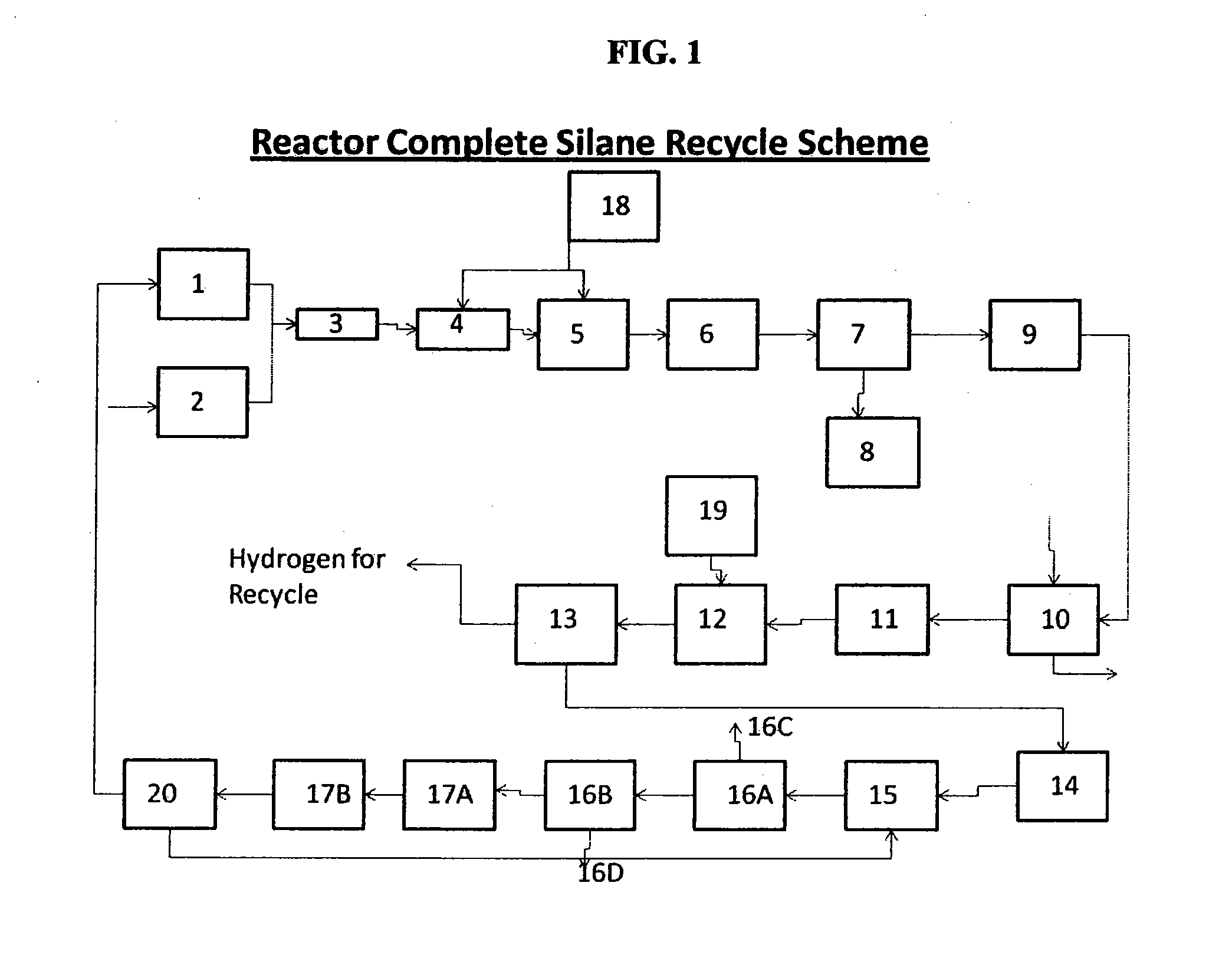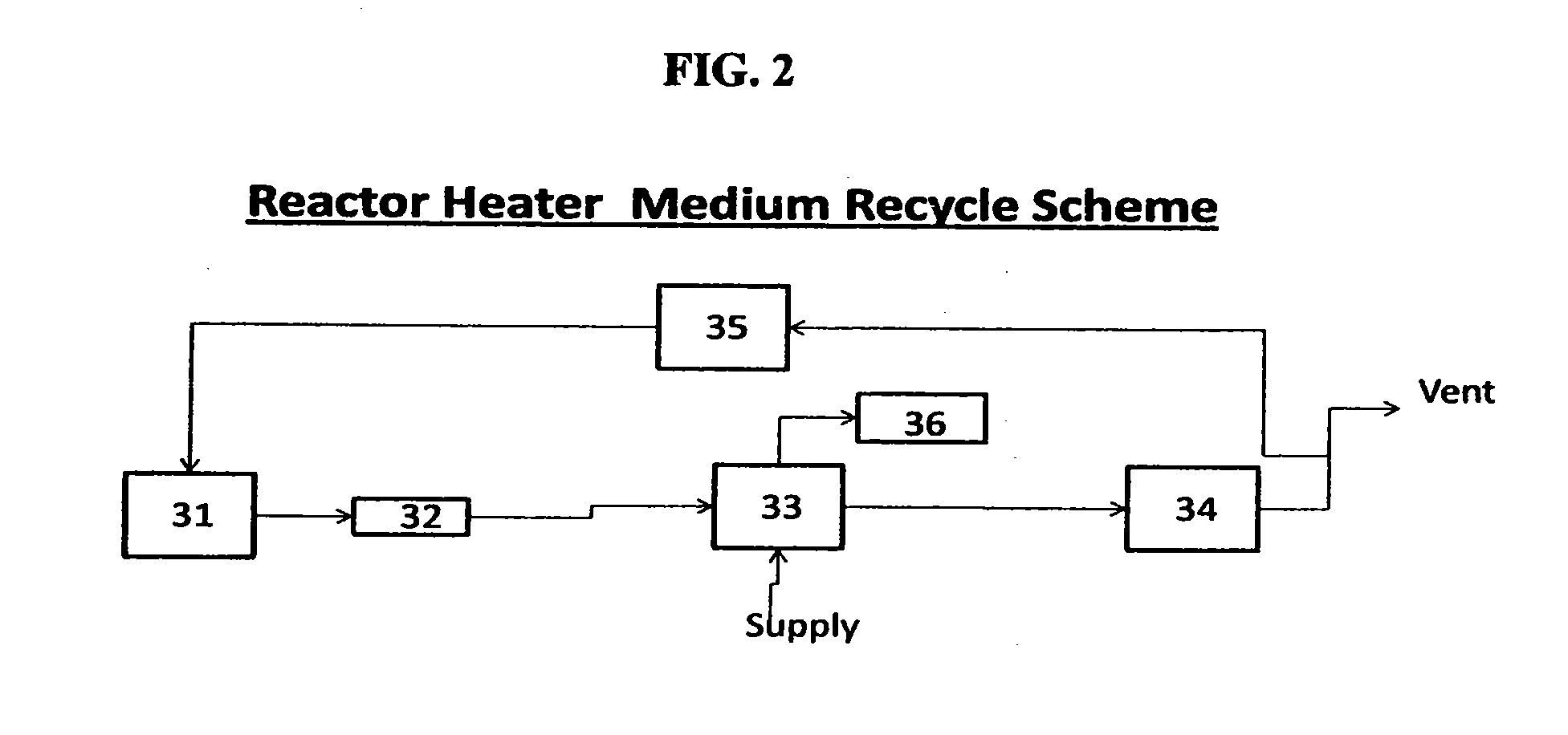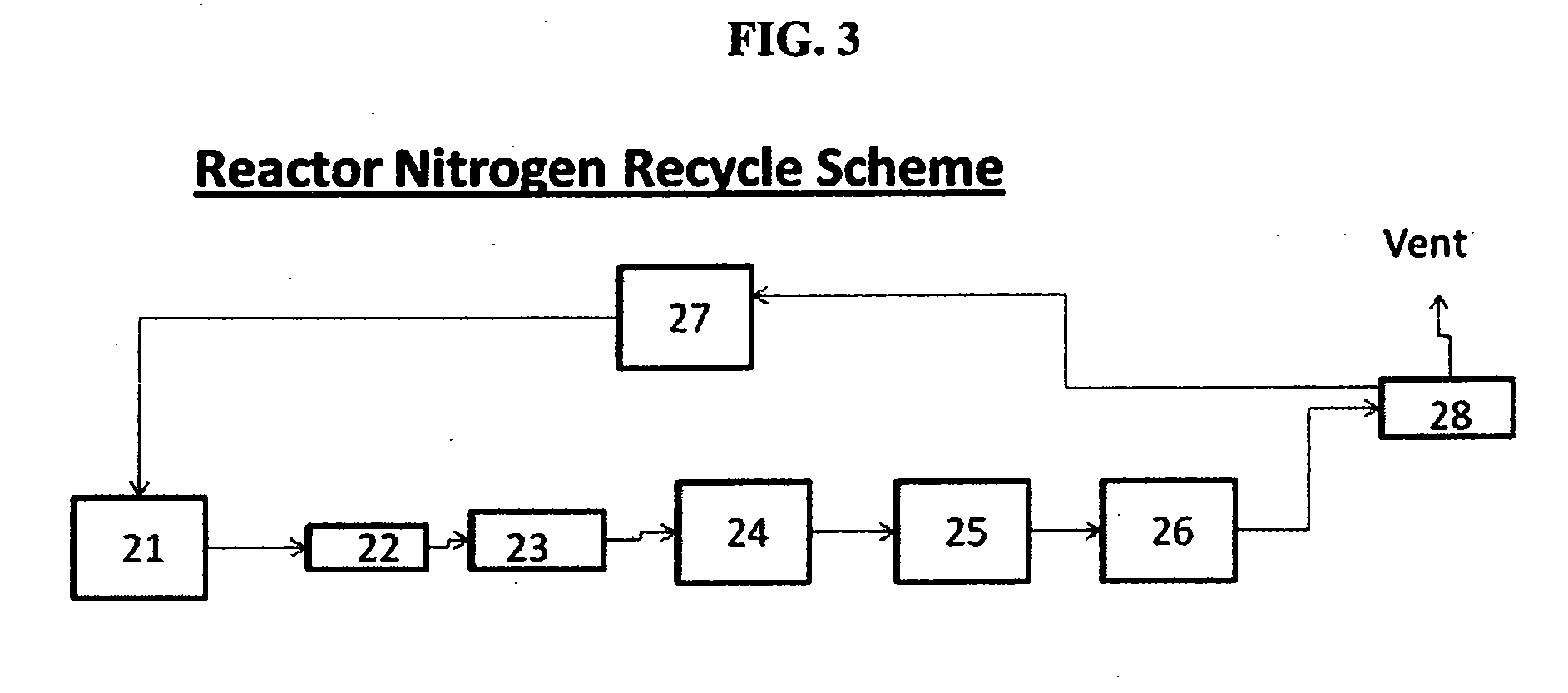CVD-Siemens Monosilane Reactor Process with Complete Utilization of Feed Gases and Total Recycle
- Summary
- Abstract
- Description
- Claims
- Application Information
AI Technical Summary
Benefits of technology
Problems solved by technology
Method used
Image
Examples
Embodiment Construction
[0033]Embodiments of the invention provide a silicon rod production apparatus, having: a reactor vessel containing at least one reaction chamber surrounded each rod by a jacket, wherein a pre-heating and heat removal fluid is circulated in the jacket; one or more electrode assemblies extending into the reaction chamber wherein each electrode assembly comprises a heating transfer jacket, one or more gas inlets, one or more heat transfer fluid inlets / outlets, at least one pair of silicon filaments, the filaments connected to each other at their upper ends with a silicon bridge to form a filament / slim rod assembly, each filament / slim rod assembly enclosed in an isolation heat transfer fluid jacket; a source of a silicon-bearing gas distributed at various points via nozzles to the interior of the vessel for supplying the gas into the reaction chamber to produce a reaction and to deposit polycrystalline silicon on the filament by chemical vapor deposition thereby producing a rod of polyc...
PUM
| Property | Measurement | Unit |
|---|---|---|
| Temperature | aaaaa | aaaaa |
| Temperature | aaaaa | aaaaa |
| Fraction | aaaaa | aaaaa |
Abstract
Description
Claims
Application Information
 Login to View More
Login to View More - R&D
- Intellectual Property
- Life Sciences
- Materials
- Tech Scout
- Unparalleled Data Quality
- Higher Quality Content
- 60% Fewer Hallucinations
Browse by: Latest US Patents, China's latest patents, Technical Efficacy Thesaurus, Application Domain, Technology Topic, Popular Technical Reports.
© 2025 PatSnap. All rights reserved.Legal|Privacy policy|Modern Slavery Act Transparency Statement|Sitemap|About US| Contact US: help@patsnap.com



